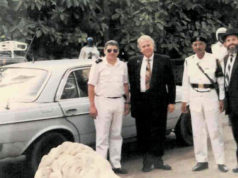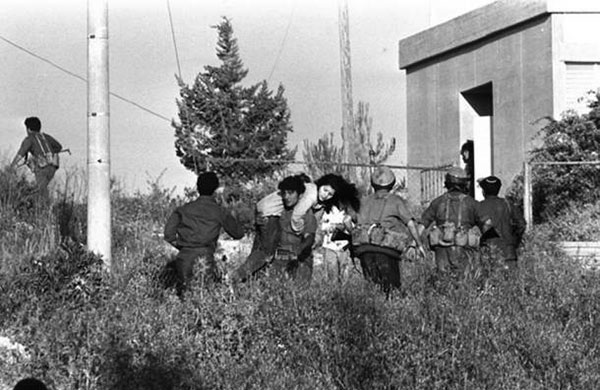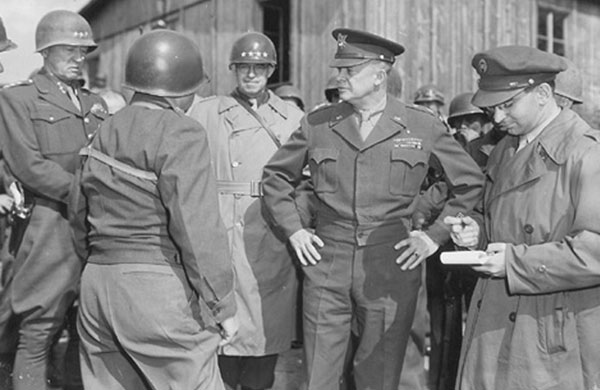 Shorty after completing his schooling, Yizhak Rabin joined the Palmachthe elite strike force of the Haganah underground defense organization, where he served for seven years. He distinguished himself as a military leader very early on.
Shorty after completing his schooling, Yizhak Rabin joined the Palmachthe elite strike force of the Haganah underground defense organization, where he served for seven years. He distinguished himself as a military leader very early on.
With the establishment of the State of Israel, the Palmach disbanded and Rabin embarked on a military career in the IDF which spanned two decades.
Rising to the rank of Major-General at the age of 32, he established the IDF leadership style which became known by the command, follow me. In 1962 he was appointed Chief of the General Staff and was promoted to the rank of Lieutenant General. He developed the IDF fighting doctrinebased on movement and surprisewhich was employed during the 1967 Six-Day War and ultimately led to the famous military victory. In January 1968, after 26 years in uniform, Rabin retired from the IDF.
That same year he was appointed Ambassador to the United States. During his five years in Washington, he strove to consolidate bilateral ties and played a major role in promoting strategic cooperation with the US, which led to massive American military aid to Israel. Rabin returned to Israel in 1973, before the Yom Kippur War. He became an active member of the Labor Party; was elected a Member of Knesset in the general elections of December 1973; and was appointed Minister of Labor in the government formed by Golda Meir in March 1974. This government resigned shortly thereafter, and on June 2, 1974, the Knesset voted confidence in the new government formed by Rabin.
His leadership style was candid, direct and at times unadorned to the point of bluntness. He not only had to face the need to solve social problems and improve the countrys economy, but also to rebuild public confidence in both the military and the civilian leadership. This task was complicated by domestic scandals, growing industrial unrest and personal rivalry within the government.
In 1975, he concluded the Interim Agreement with Egypt, which led to Israeli withdrawal from the Suez Canal in return for free passage of Israeli shipping through the canal. As a result of this agreement, the first Memorandum of Understanding was signed between the Government of Israel and the United States, ensuring American support for Israeli interests in the international arena and renewed American aid.
In July 1976, the government headed by Yitzhak Rabin ordered the Entebbe Operation for the rescue of Air France passengers hijacked by terrorists to Uganda. In this daring operation, thousands of miles from home, the hostages were released and flown to safety in Israel. The commander of the operation, Lieutenant-Colonel Yonatan Netanyahu, was killed.

A no-confidence vote toppled Rabins government. He resigned prior to the 1977 elections, which swept opposition leader Menachem Begin into office.
During the next two decades, Rabin served as a member of Knesset. For six years (1984-1990), he was Minister of Defense in two national unity governments, engineering security arrangements on the Israeli-Lebanese border that allowed Israeli troops to withdraw to a narrow security zone. He also guided the countrys initial response to the intifada. From March 1990 until June 1992, he served again as an opposition Member of Knesset.
In February 1992, the Labor Party held its first primaries: Rabin was selected Chairman of the Labor Party and, after the election victory in June 1992, he began his second tenure as Prime Minister and Minister of Defense.
Rabins second term as Prime Minister was marked by two historic eventsthe Oslo Agreements with the Palestinians and the Treaty of Peace with Jordan. Working closely with Shimon Peres, the Foreign Minister, he masterminded negotiations on the Declaration of Principles signed with the PLO at the White House in September 1993. This won Rabin, Peres and Arafat the 1994 Nobel Peace Prize and opened negotiations with the Palestinians on autonomy in Gaza and some areas of Judea and Samaria and on the establishment of a Palestinian Authority.
In October 1994, a Treaty of Peace was signed with the Kingdom of Jordan. This encouraged the development of ties with additional Arab countries in North Africa and the Persian Gulf.
On November 4, 1995, upon leaving a mass rally for peace held under the slogan Yes to Peace, No to Violence, Yitzhak Rabin was assassinated by a Jewish right-wing extremist. He was 73 when he was laid to rest before a shocked and grieving nation, in a state funeral on Mt. Herzl in Jerusalem, attended by leaders from around the world.



